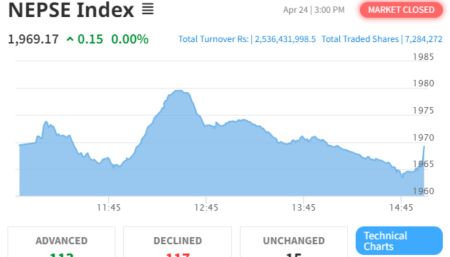 In today’s competitive skills market scenario, businesses are required to adopt special care on compensation and benefits for its people resources. The time has expressed its demand for strategic compensation system against a traditional one. Compensation provided to employees can be in the form of cash benefits or nonmonetary benefits. It is the sum of total rewards and benefits extended in return for their contribution to businesses. If compensation issues are managed effectively, it results in enhanced productivity. An employee does not work only for monetary benefit; however, the financial consideration remains one of the most important key for their working. The complete clarity of processes in compensation and benefits is crucial in view of unbiased decision process as well acceptance thereof.
In today’s competitive skills market scenario, businesses are required to adopt special care on compensation and benefits for its people resources. The time has expressed its demand for strategic compensation system against a traditional one. Compensation provided to employees can be in the form of cash benefits or nonmonetary benefits. It is the sum of total rewards and benefits extended in return for their contribution to businesses. If compensation issues are managed effectively, it results in enhanced productivity. An employee does not work only for monetary benefit; however, the financial consideration remains one of the most important key for their working. The complete clarity of processes in compensation and benefits is crucial in view of unbiased decision process as well acceptance thereof.
Compensation and benefits means a cost to the management they are ready to pay for the services of an individual employee where as for an employee, it is an income against sales of their services to a buyer/organisation. Evolving a scientific compensation and benefit structure involves: government legislations and policies, supply and demand scenario in skills market, comparative study within an industry/business, productivity, labour cost and ability to pay etc. A true pay for performance supports productivity enhancement and talent retention. At the same time, it is also a fact that compensation management is not just a means to attract and retain skills; it rather leverages sustaining of competitive advantage for both (employer and employee) through integration processes that result in optimal achievements. Compensation and benefits plays a vital role in people management thus this belongs to the most specialised areas within human resources management (HRM). It deals with controlling and managing rules/policy/ procedures around guaranteed pay, variable pay and benefits etc to the most important resources of an organisation, that is, skills.
Â
Compensation and benefits is one of the important functions inside HRM that connects with the competitors in the market and develops compensation policies that are fully competitive in the skills market. In the current context, compensation systems are designed in alignment to business goals and overall organisational strategies. Thus, compensation strategies are also aligned with the business goals and objectives. The human resources strategies derived from overall business strategies sets the path way and objective for the human resources function that compensation and benefits strategies requires to follow. It cannot differ from one another in any circumstances to guarantee full alignment which is most essential for no-conflict environment. The compensation and benefits strategy becomes the guiding factor in setting up general rules for the compensation and benefits area in an organisation. It is recognised as the most important part of HRM focused solely on employees’ rewards and benefits policy making.
The recent compensation and benefits theories have divided compensation and benefits into four key categories:
a. Guaranteed Pay: Monetary/cash payment paid to employees based on their availability, that is, a certain sum for a fixed period of time but not linked to performance or productivity. It is also known as time wage and basic pay package.
b. Variable Pay: Monetary/cash payment paid to employees based on performance or result achieved, that is, normally based on analysis or past performance establishing average performance of a particular standard of workmanship. Sales incentive, productivity incentive, performance bonus etc are some examples. It is also known as progressive piece pay package.
c. Benefits: Monetary/cash and/or nonmonetary facilities to supplement employees namely insurance, mobilisation, leave travel assistance, time-off payment, tips, communication facilities, statutory holidays and leave, house rent and special allowances, retirement and post retirement benefits etc.
d. Equity: This is a pay plan that uses the employers’ share as compensation to employees in the form of a stock option for them. This is not common in our part of the world though the objectives of this category plan are talent attraction and retention and alignment of interests (of employees and shareowners). In essence, compensation is a reward or payment paid to an employee in return for their contribution to a business. The role of various components of the reward is very important as the role of different components differ from one another, for example, dearness allowance is to compensate, console or provide support on account of the cost of living whereas performance bonus, incentive and sales incentive are for better people productivity. A sound compensation and benefits systems aims to:
a. Attract and retain the talent
b. Pay for the job instead of the position
c. Reward the effort and merit
d. Enhance people productivity, and e. Promote organisational flexibility
Hence, the compensation and benefits strategy requires full support from the top management as it describes limits to the organisational routine, especially for line management. Normally, they do not get convinced with the philosophies considered while determining this strategy.
Further, it is an unavoidable fact that compensation is an important factor for people while accepting a job/employment. There are obvious challenges in the areas of retaining desired talents and offering competitive salary, wages and benefits becomes the most essential necessity. At the same time, organisations must also market their strengths in terms of their offering of positive relationships and varied challenges in job offerings. Organisations are desired to fully leverage their people resources to sustain competitive position through integration of processes, programmes and information to achieve optimal expectations. Compensation and benefits are mainly influenced by two types of elements:
a. Internal: Business objectives, trade unions, employee equity, organisational values, culture and structures are important internal influencers; and
b. External: Inflation, skills market, economy, taxation and relevant industry trends are key external influencers. While on review process, it would be eminent to have information on the total compensation and benefits packages inclusive of retirement or post retirement benefits for better comparison that leads to an effective and efficient decision process. One also needs to consider:
a. More than one source of information
b. Competitors to whom skills are lost (who left the organisation)
c. Salary positioning
d. Expected reinforcement of desirable behaviour
e. Mark of recognition
To conclude, it is advisable to establish direct relation of individual goals with corporate business objectives. This will make employees realise that the fulfillment of employees’ aspirations lies in the achievement of organisational expectations. This, being the most sensitive aspect of people management, one must remember that employees know and very clearly understand the aspects of performance contributing towards the compensation factor. It would also be advantageous to clarify each individual employee about the contribution of abilities and efforts to high performance level along with its quantification.





















